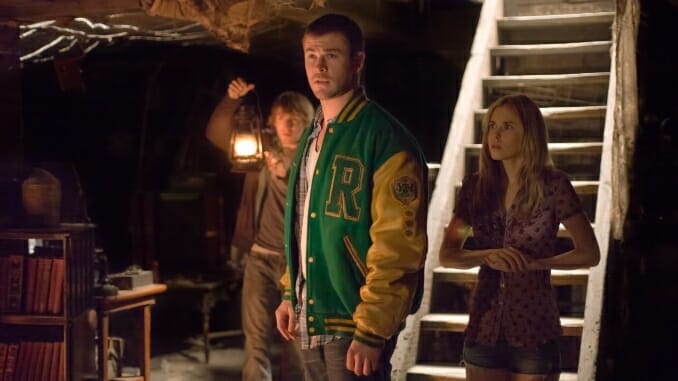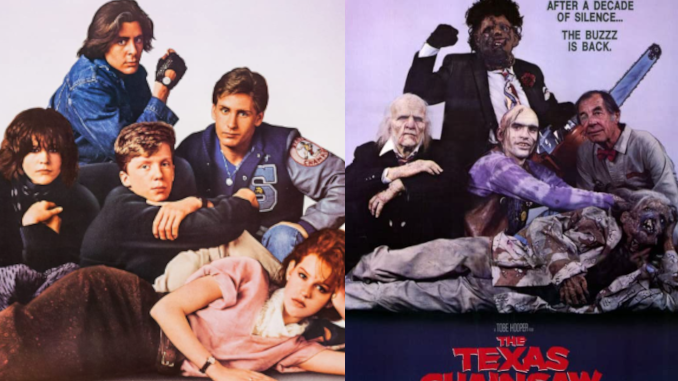Cabin in the Woods Turns 10: A Benchmark in the Long Love Affair Between Comedy and Horror

If you’re even a casual watcher of horror movies, you’re probably well acquainted with the tried-and-true “cabin in the woods” trope and the 2012 film named for it. But you might not be as well acquainted with the comedic blood (and not just in the “so bad it’s good” camp) running through the vein of horror.
But to make fun of something well, you first have to know it well; let’s go through a brief history of “cabin in the woods” horror movies, a subgenre of travel horror (any sort of media dealing with protagonists entering unfamiliar spaces to them and dealing with horrific, previously unknown threats).
I’d argue one of the first entries in the travel horror genre was Alfred Hitchock’s 1960 film Psycho—a woman on the run stays in a roadside motel to less than ideal results. But travel horror truly got its legs when a group of teenagers went on a roadtrip through the backroads of Texas in Tobe Hooper’s 1974 low-budget foray The Texas Chainsaw Massacre.
Texas Chainsaw Massacre writer and director Tobe Hooper told the AV Club in a 2000 interview:
I started in comedy, and to me, one of the things I love about Chainsaw is the dark comedy that’s obviously in it. An example is a line they quote a lot in screenings: “Look what your brother’s done to the door.” It’s kind of ironic, dark comedy. But it was years until anyone recognized that aspect of it, I guess because it filled the senses in such a direction. “Don’t go into the woods. You don’t know what’s out there.” I don’t think the comedy was seen until later.
But Hooper wouldn’t course-correct for another twelve years.
Meanwhile, in the years following 1974, the floodgates opened and we received films like Tourist Trap (1979), Mother’s Day (1980), Friday the 13th (1980), and The Evil Dead (1981). Travel horror was a bona fide genre and comedy was already creeping into it. Although Tourist Trap was played mostly straight, Mother’s Day, a noted influence on travel horror extraordinaire Eli Roth, leaned into dark comedy hard. Real hard.
-

-

-

-

-

-

-

-

-

-

-

-

-

-

-

-

-

-

-

-

-

-

-

-

-

-

-

-

-

-

-

-

-

-

-

-

-

-

-

-









































